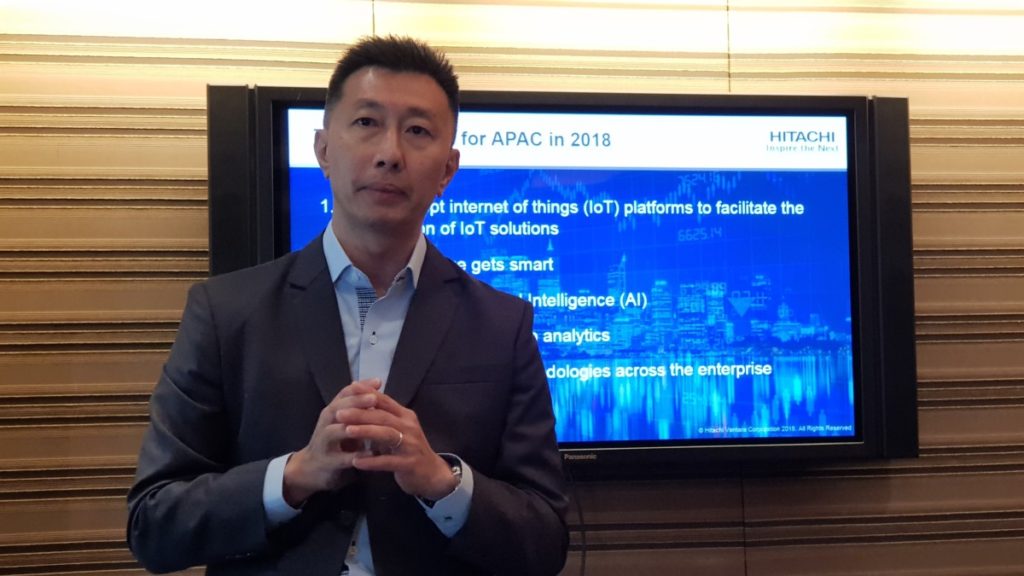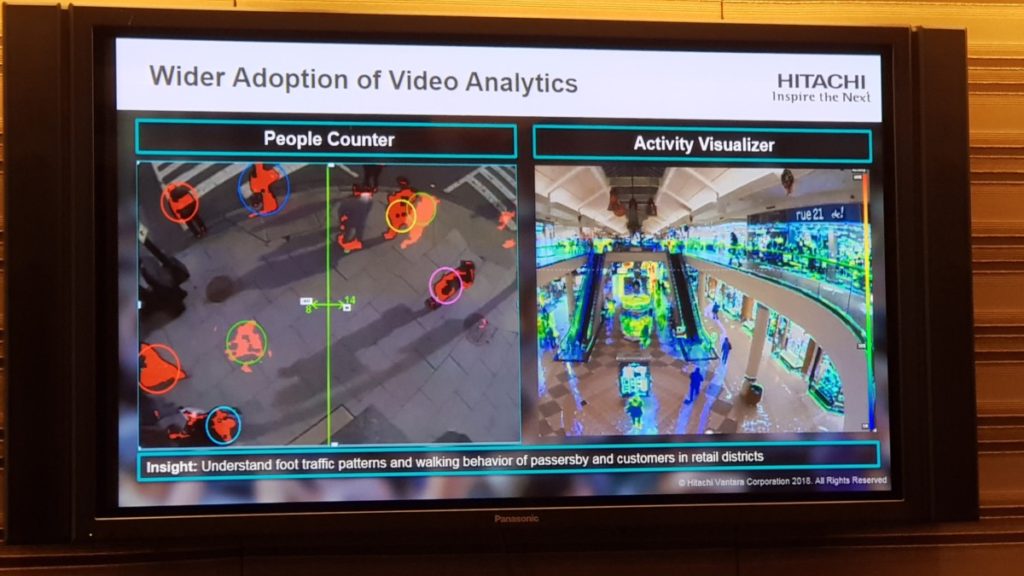
Hitachi Vantara talks IT trends for 2018

Mr. KC Phua, Director of Data Solutions Group Hitachi Vantara APAC
In a special briefing, Hitachi Vantara, a data-management solutions provider that combines the operations of Hitachi Data Systems, Hitachi Insight Group and Pentaho into a single integrated business as of September 2017 shared their latest insights on key business and information technology trends that will influence the Asia Pacific region for 2018.
The predictions were jointly formulated by Mr. Hubert Yoshida, Chief Technology Officer and Mr. Russell Skingsley, Chief Technology Officer, Asia Pacific for Hitachi Vantara. Mr. Wee Kai Teck, Managing Director for Hitachi Vantara Sdn Bhd and Mr. KC Phua, Director, Data Solutions Group Hitachi Vantara APAC hosted the aforementioned briefing where they shared key highlights of Yoshida and Skingley’s predictions with invited guests.
The lengthy report spans ten key trends that Hitachi Vantara will see dominating enterprise IT strategies. Here are the three key ones that we think will directly impact businesses the most in the Asia Pacific market. For a full report, swing by www.hitachivantara.com
#1 IT will adopt IoT platforms to facilitate the application of IoT solutions
Table of Contents
The internet of things is everywhere and growing fast with a vast array of IoT-enabled hardware from door locks to security cameras providing a deluge of raw data. If information is power, then tapping and making sense of all this data can potentially help enhance the performance and capabilities of an organisation by several orders of magnitude. The challenge of course is picking the right IoT platform to get started.
According to Hitachi Vantara, businesses across the board will be prioritising IoT solutions so as to enable digital transformation though the challenge is picking the right one. Based on Hitachi Vantara’s report, an IoT platform needs to offer an open, flexible architecture that makes integration easy while providing the assets to design, build and deploy customised assets to their specific industry rapidly with minimal complications.
It’s not simply a ‘hop onto the bandwagon’ thing though as businesses have to consider the long term implications of embracing IoT in every aspect of their operations. It’s an inevitability to implement it at this point in time but there’s still a bit of time left to pick which platform to go with.
#2 Object storage gets smart(er)
Following on from point #1, many businesses are sitting on a veritable mountain of data but making sense of it much less actionable business outcomes remains the challenge. Ofttimes, data is siloed away in different databases, even within the same organisation which results in useless duplicates or worse, obsolete data. Enter object storage which can store all this unstructured data and then provide some semblance of metadata management though finding context in such a sea of data is still a challenge.
An example is that a chap named John Doe in two separate databases may refer to the same person or two entirely different people who coincidentally have the same name. Smarter databases can try searching for other bits of data to differentiate them but it takes context-sensitive software to make sense of it all which is where solutions like Hitachi Vantara’s Hitachi Content Intelligence platform comes into the picture as HCI can derive meaningful data from these disparate data silos and then process it in a sufficiently effective fashion that a person needn’t have to pore through hours and terabytes of data to figure out an actionable solution.
It’s not enough to start collecting and harvesting data. You still need an effective means of making sense of it all. To wit, an effective hardware solution and sufficiently intelligent software service platforms that can effectively mine that data will be needed in 2018 to leverage the sea of data that businesses have languishing in their silos.
#3 Wider adoption of video analytics
The average video takes up a lot of storage space. Analysing a given video, like say, security footage to detect a potential wrongdoer or to identify a perp, will take hours for a single man to pore through. Now, multiply that by the millions of security cameras and social media video feeds on the planet and you have a huge problem. There’s too much data and no smart-enough way to pore through it all.
While databases can be cleaned, mined and sorted, videos are images that require some level of understanding and context to interpret. An example is that a human observer can easily tell if a cat is real or if it’s simply a stuffed toy, or if a person in a video is doing something dodgy but try telling a machine that. Machine learning and augmented intelligences have grown by leaps and bounds in recent years but the clincher is integrating the insights gained from that video with other contextual data to create a bigger, better picture.

According to Hitachi Vantara, algorithms that determine what’s happening in a video combined with IoT data like information from social media and phone GPS data can be combined together to create more meaningful and valuable data for businesses beyond the usual context of the security industry.
Essentially, businesses, when they combine this visual and contextual IoT data can help derive actionable ways to enhance their businesses such as maximising visits to storefronts or enhancing ergonomics in a production plant. For 2018, businesses, depending on where they are on the IoT adoption cycle and their level of sophistication will investigate or find means of integrating it into their business processes if not now or in the future.
